Innovative digital technology has found a home on today’s construction sites, and so has the complexity that goes along with it. In the air, drones are surveying the landscape to measure volumes and create interactive 3D topographical maps. On the ground, contractors are deploying next-generation machinery to make worksites safer and more productive. What may have been a futuristic pipedream a few years ago is quickly becoming standard for construction sites all over North America.
A number of factors are driving the adoption of these innovations, including the increasing pace of competition, as well as shifts in the composition of the skilled labor force. But while some organizations began adopting and assessing new technology some years ago, others are only now coming to grips with these tools. Fortunately for newcomers, there is a pathway to reducing the risks of technology adoption.
A Tech Trend that’s Here to Stay
Call it Industry 4.0, IoT, or The Digital Era, by any name new technologies, are here to help automate tasks, monitor performance, support real-time collaboration, accelerate processes, and, above all, deliver levels of efficiency, safety, productivity, and profitability that were not previously attainable.
Within the construction industry, site sensors are used to monitor air temperature, noise levels, dust particulates, air quality, and other conditions to ensure worker safety. Cloud-based collaboration, drones, robots, AI, autonomous vehicles, and data collection apps are in daily use, while applications for virtual reality/augmented reality, 3D printing, and more, are revolutionizing construction as we know it.
These types of innovations are delivering measurable productivity and safety benefits, resulting in a hefty and sustained return on investment. Those who are in a position to leverage it are already distancing themselves from their competitors.
Likewise, new technologies in construction equipment are driving productivity and uptime in jobsite operations. On-board computers, sensors, touch screens, hi-resolution cameras, and GPS guidance have forever changed the in-cab experience. Automating and removing redundant operator processes makes contract bidding easier and more consistent.
Manufacturers are competing to make machines even smarter, more intuitive, and increasingly attractive to buyers. A case in point is next year’s CONEXPO, where OEMs will be showcasing telematics, grade control, payload weighing, and other advances.
Trimble® Earthworks Grade Control Platform for soil compactors
Today’s heavy equipment is ever more sophisticated – and operating it safely and effectively requires an equally sophisticated skillset. In many respects, this is in fact one of the biggest hurdles to widespread hi-tech adoption in the construction sector.
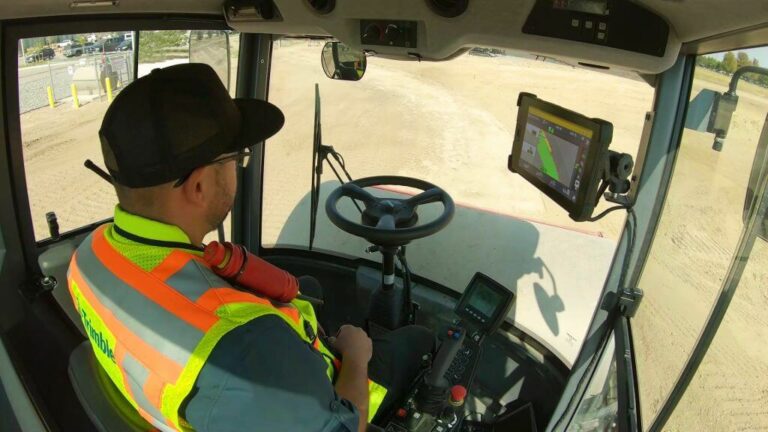
Today’s heavy equipment is ever more sophisticated – and operating it safely and effectively requires an equally sophisticated skillset. In many respects, this is in fact one of the biggest hurdles to widespread hi-tech adoption in the construction sector.
What are the Risks?
Although the benefits and competitive drivers are clear, new technology has not yet reached the stage of seamless, frictionless adoption. There are a number of factors to consider:
Hidden Costs
New construction equipment comes with a hefty price tag; and when factoring in costs of implementation, training, insurance, and other expenses, it can be overwhelming for some. What’s more, lost revenue associated with any downtime can influence owners or managers who find it difficult to justify pulling an operator and/or equipment off-line for training or to train others.
Infrastructure Readiness
While equipment might be cutting-edge, some organizations may lack the in-house expertise or infrastructure needed to fully maximize investments and support such technologies.
User Buy-in
When it comes to adopting new technology, healthy skepticism is in order. However, many senior-level construction managers did not come up through the ranks using new technology, and may be inclined to reject it out of hand. That’s why it’s helpful to make sure an advisor is on hand to answer questions about where, when, or how to begin the process of evaluation and implementation.
Training
New tech confers a competitive advantage only if its users are skilled in its deployment. This often raises an chicken-and-egg conundrum for tech-averse companies: how to learn new skills without first-hand experience. The good news is that training solution providers are accelerating operator learning with their own brands of innovation and technology.
What are the Risks?
Equipment operator training lays the foundation for a seamless technology transition. The best outcomes result from top-of-the-line training technology in combination with especially knowledgeable instructors.
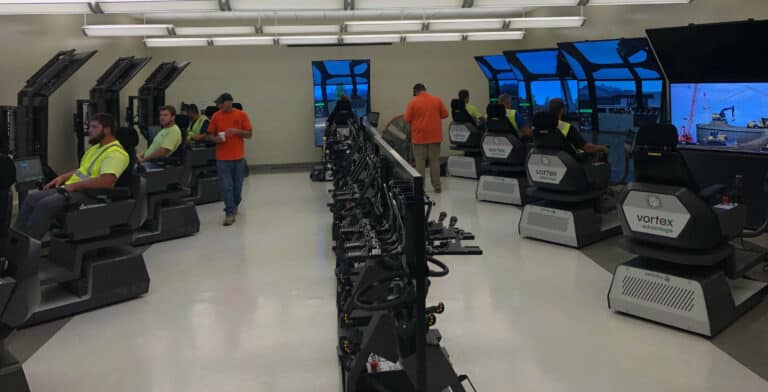
From operation and safety videos to classrooms, field training, and virtual instruction, manufacturers, equipment dealers, contractors, and training centers are fortunate to have a variety of training options. While each has merit, one technology-based solution is rising to the top in terms of ease of use and effectiveness.
Simulation-Based Training
Training simulators have advanced by leaps and bounds over the years. In fact, today’s simulators mirror the operator experience to the point where even veteran operators liken the experience to that of an actual machine. When engaging the hydraulics, swinging the arm, or lifting the bucket filled with dirt, trainees can see and feel the corresponding machine reaction in the controls and in the seat.
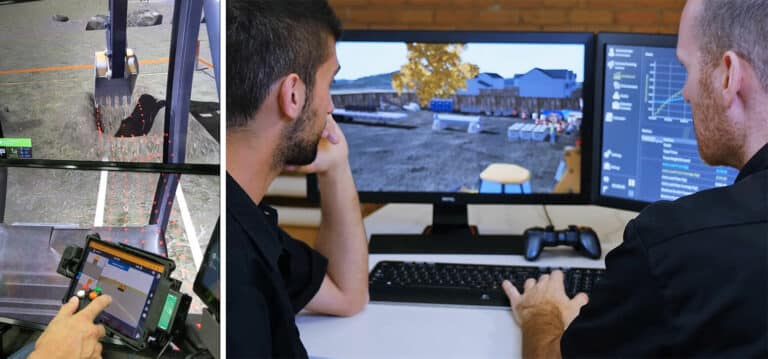
(Right) Instructor Operating Tools allow trainers to adjust operating conditions such as weather and time of day.
The next best thing to in the field training, simulators challenge trainees with a variety of increasingly challenging scenarios and conditions (lighting, terrain, weather, exercises) that are not always practical or possible with traditional training methods. In addition to enhanced learning, simulators are shown to be a cost-effective alternative to field training. Simulators save fuel and equipment maintenance costs while allowing equipment to remain in production.
Expanding Benefits to Using Simulators
Early exposure to next-generation technology using a simulator provides a window into new sophisticated workflows, processes, and skillset adaptations, even before working on the actual equipment. Operators and management can work together to tweak and test how the technology affects construction and operations, without risking safety, productivity, or equipment.
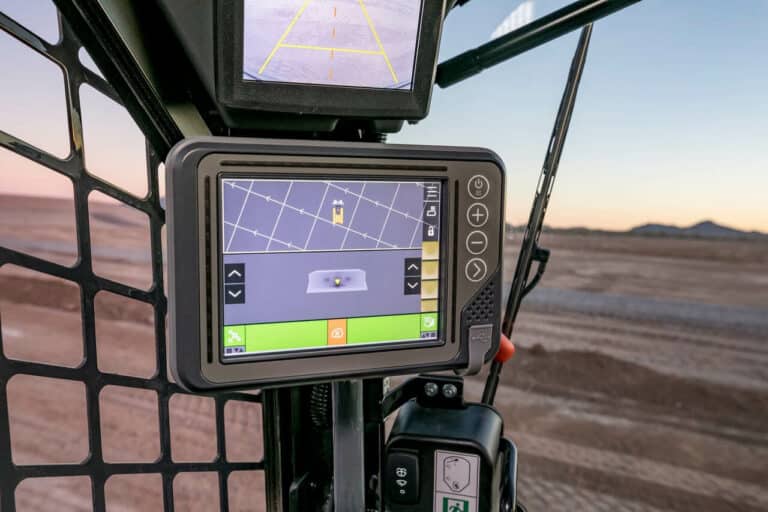
Wheel loaders designed with Grade Quality Simulators (GQS) are embedded in CM Labs simulator training and assessment software, providing real-time visual feedback while digging or leveling. Contractors wanting to improve productivity with Trimble® Earthworks Grade Control Platform can connect the tablet directly to our Excavator Simulator and get an immediate sense of true worksite ROI.
Time on the simulator is not only about reinforcing muscle memory and refining technique, it is also about managing change and dealing with stress that can come with it. Real-world parameters, tactile simulator seats, and instruments, are immersive and mimic so well that even 2 -3 hours on a simulator can be physically exhausting. Simulators can also be a great tool to socialize new equipment to the team – everyone gets to try out, fail safely, virtually, all the while helping to adjust their perceptions of how new technology is shaping their jobsite.
Getting to the benefits
Technology is moving at a breakneck pace, and it’s taking the construction industry along with it. To remain competitive, and attract younger tech-savvy workers, companies must take the steps to mainstream these tools into daily operations.
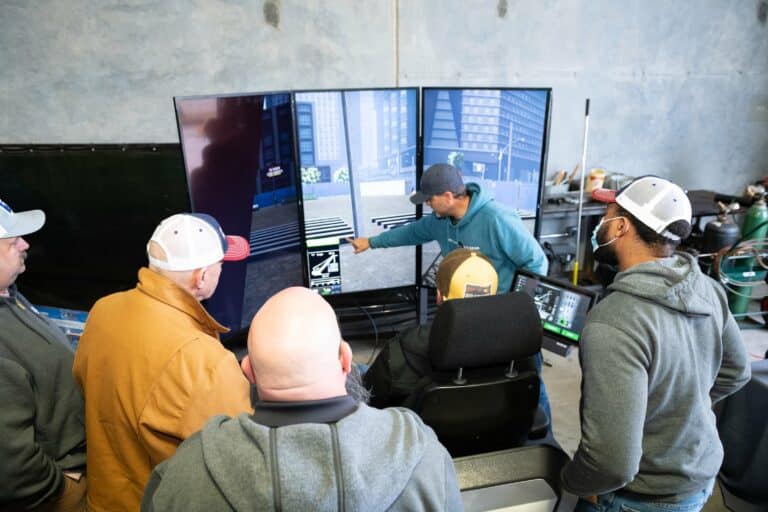
For first-time adopters, this will be challenging, as new technology represents a paradigm shift on several levels. And while there are a variety of approaches to change, by far the most effective involves a hands-on experience that allows users to experience the benefits directly.
CM Labs examines this topic and more in our Virtual Construction Event. Our keynote speakers, all veteran expert trainers, discuss strategies and advice on training innovations. Additionally, 3 more sessions include a hands-on instructor walk-through, an invaluable training tactics and best practices with HE operator, Gary James, and a showcase of the last tools for safer, more efficient worksites. Register for free here.